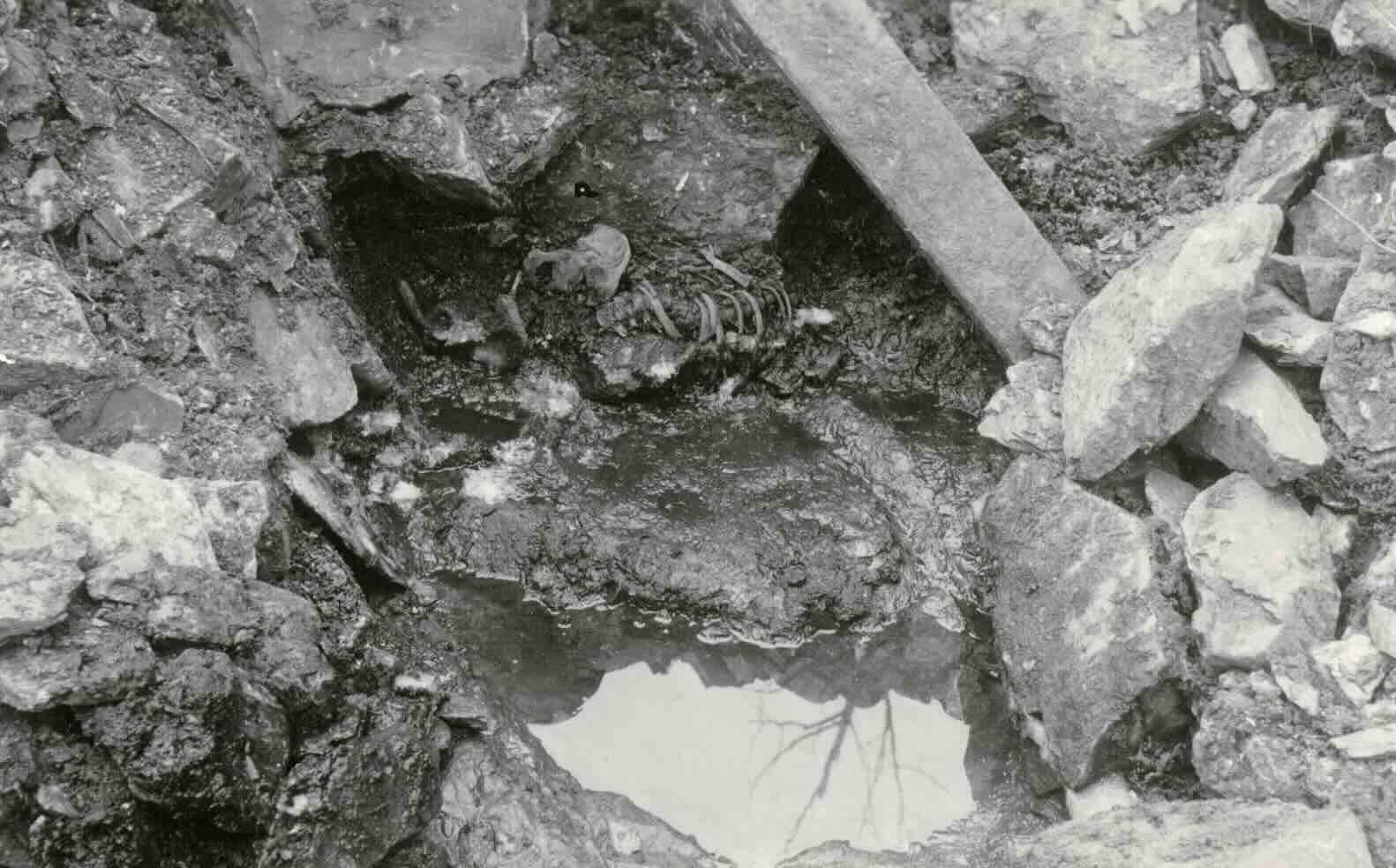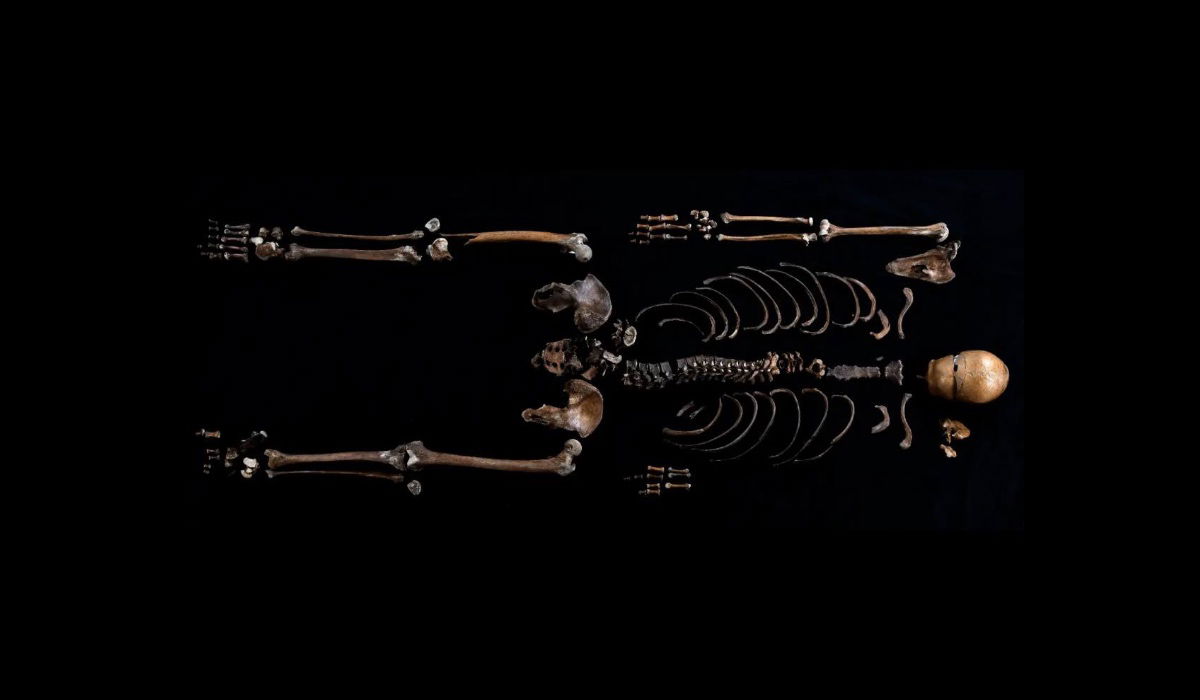In 1938, unidentified human remains were discovered within a well on the grounds of Sverresborg Castle, once the stronghold of King Sverre Sigurdsson in the medieval city of Nidaros, today known as Trondheim, Norway. The mystery surrounding the remains has led researchers on a decades-long search pursuit of the identity of the individual, who was dubbed “Well-man.”
The remains, having long remained a mystery, became the focus of a recent study using advanced DNA sequencing that researchers say has helped reveal clues to the identity of Well-Man.
Now, scientists believe these enigmatic bones, which belonged to a man who lived nearly 900 years ago, correspond to a passage in the Sverris Saga, a medieval Norse tale that describes a body being thrown into a well during a raid in 1197 in an attempt to poison the water supply.
The new research, published in iScience, corroborates the ancient saga, blending history, archaeology, and science.
“This is the first time that a person described in these historical texts has actually been found,” Professor Michael D. Martin from the Norwegian University of Science and Technology’s University Museum in Trondheim, who helped lead the research, said in a recent statement.


The discovery substantiates the saga’s account and sets a precedent for using genomics to study medieval and ancient remains.
Discovering the “Well-Man”
When the “Well-Man’s” remains were initially found near Sverresborg Castle decades ago, researchers lacked the advanced tools needed to thoroughly analyze the discovery. Fast-forward to today, where modern radiocarbon dating techniques have confirmed that the bones are approximately 900 years old, while gene-sequencing technology has helped provide further insights into the Well-Man’s identity.
Previous studies showed that the Well-man was a male between 30 and 40 years old at the time of his death. Further genome sequencing by Dr. Martin Rene Ellegaard, also from the Norwegian University of Science and Technology, showed that he likely had blue eyes and blond or light-brown hair, and his ancestors hailed from Vest-Agder, a region in southern Norway.
The new research was made possible through a collaboration with deCODE Genetics in Iceland, which provided reference data from the genomes of modern-day Norwegians.


“The more ancient genomes that we sequence and the more modern individuals that we sequence, the better the analysis will be in the future,” Ellegaard said in a statement about the new findings.
Looking At an Ancient Text
The connection between the remains and the Sverris Saga began with historical clues about a military raid at Sverresborg Castle in 1197. According to the saga, during the siege invaders threw a body into the castle’s well in an attempt to poison the inhabitants’ main water source. The researchers wondered if the “Well-Man’s” body could be the same one referenced in this ancient narrative.
The Sverris Saga, which is over 800 years old, offers a detailed narrative of King Sverre’s reign. However, researchers recognize that not everything described in the saga is completely accurate.
“The text is not absolutely correct—what we have seen is that the reality is much more complex than the text,” archaeologist Anna Petersén from the Norwegian Institute of Cultural Heritage Research said in a recent statement.
Genomics Unveils New Clues
To truly identify the “Well-Man,” the researchers turned to more modern science: genetics. Genomic data offers a neutral perspective that allows researchers to verify historical claims without the bias that may come from written records.
However, the researchers had to make compromises in their testing. Sampling the “Well-Man’s” genome required removing the outer surface of one of his teeth and grinding it into a powder, a step necessary to avoid contamination from modern handlers. Unfortunately, this means that the tooth can no longer be used for further testing, limiting future opportunities to analyze potential pathogens he may have carried at the time of his death.
Through their genomic analysis, the researchers corroborated the body’s age and location with those described in the Norse saga, validating this portion of the saga’s text.
Going forward, the researchers hope to apply genomic techniques similar to those that helped reveal the Well-man’s history to study other historical figures. Among these, Professor Martin mentioned the possibility of testing remains believed to belong to Saint Olaf, a revered figure in Norwegian history whose burial site is considered beneath Trondheim Cathedral. If such remains are uncovered, they could be studied for physical characteristics and ancestral lineage.
Kenna Hughes-Castleberry is the Science Communicator at JILA (a world-leading physics research institute) and a science writer at The Debrief. Follow and connect with her on X or contact her via email at kenna@thedebrief.org

